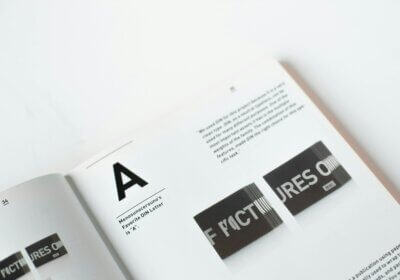When it comes to the challenging thread that is user experience (UX) design, typography is frequently an element that is modest yet essential. Colors, images, and layouts are all effective ways to attract attention. Nevertheless, the delicate art of typography is what ultimately creates the trip that a user takes. Through the careful selection and application of fonts, designers have the ability to convert a simple computer interface into an experience that is both fascinating and easy to understand.
Fonts are more than just the artistic representation of text. They are a potent instrument that has the ability to elicit feelings, direct the eye, and improve comprehension. In contrast, a poorly picked typeface might weaken the message that a company is trying to convey, while a well-chosen typeface can elevate the identity of a business. Every typographic choice plays a significant part in determining how the user perceives the content, from the big headlines that attract attention to the delicate body copy that encourages reading.
It is possible for designers to develop user interfaces that are not only visually appealing but also highly functional if they take the time to investigate the complexities of typography. This guide will dive into the fundamental concepts of typography, offer helpful advice for choosing fonts, and present real-world examples of how typography can be utilized to improve user experience design.
Understanding the fundamental components of typography
Having a firm grasp on some fundamental concepts is absolutely necessary before delving into the complexities of typography in UX design. The term “font” refers to a particular typeface that has a particular style, size, and weight. A typeface, on the other hand, is a family of characters that includes letters, numbers, and symbols and is designed to have a visual appearance that is constant throughout the entire family.
There are two basic groups of typefaces, which are known as serif fonts and sans-serif fonts. Serif typefaces are distinguished by the presence of little decorative strokes, also known as serifs, at the beginning and end of each character. These fonts are frequently associated with designs that are considered to be conventional and formal. Generally speaking, sans-serif fonts, which do not contain serifs, are considered to be more contemporary and contemporary.
When it comes to typography, the notions of readability and legibility are absolutely necessary. Readability refers to the ease with which text can be comprehended, whereas legibility refers to the ease with which text can be recognized. Both of these aspects are essential for a satisfying experience for the user.
The art of font selection
The process of selecting the appropriate fonts for your user experience design is a laborious one that calls for striking a balance between aesthetics and usefulness. It is important that the fonts you select are congruent with the identity and messaging of your company. A business that is known for its humorous nature would choose a font that is funny, whereas a corporate brand might go for a typeface that is more serious and professional.
One of the highest priority is to give usability and legibility importance, particularly when dealing with smaller text sizes on mobile devices. Avoid using script or extremely decorative fonts, as they can make it more difficult to understand. In order to preserve the visual coherence of your design, you should restrict the amount of typefaces that you utilize. In most cases, it is adequate to use two to three fonts, with one primary typeface and one or two supplementary fonts for headers, accents, or calls to action.
To make the text easier to read, make sure there is a suitable contrast between the color of the font and the color of the background. Additionally, make use of font size, weight, and style in order to establish a visual hierarchy that directs the attention of the user to the content that is most critically relevant. Taking into account people who have visual impairments and selecting fonts that have letterforms that are clear and distinct as well as enough contrast is an effective way to increase accessibility.
Mastering the art of typography
Following a careful selection of your typefaces, it is now necessary to use them in an efficient manner in order to improve your user experience design. For best clarity, spacing is of the utmost importance. Incorrect spacing, which refers to the spacing between letters, leading, which refers to the spacing between lines, and tracking, which refers to the spacing between words, can have a substantial impact on the ability to comprehend and appreciate your writing.
In order to get a clean and orderly appearance, alignment is an extremely important factor. Even though left alignment is typically the most readable, center alignment and right alignment are still viable options for some applications, such as when headings or short blocks of text are being presented. Another key consideration is the length of the line; maintaining lines that are between 45 and 75 characters in length can help increase readability and reduce eye strain.
It is important that the size of the text be suitable for a variety of screen sizes and content types. For the purpose of establishing a distinct visual structure, headings should to be larger and bolder than the body text. It is possible to use strategic use of color in order to draw attention to significant information and generate visual interest. However, you should avoid utilizing an excessive amount of colors because doing so might cause viewers to become distracted and can make the text more difficult to read.
Examples from the real world that show typography matters
To better understand how some famous companies have utilized typography to improve their user experience, let’s have a look at the following examples:
Google: The minimalist design philosophy that Google follows places a significant focus on typography. Creating a sense of clarity and efficiency can be accomplished through the utilization of a simple sans-serif font like Roboto.
Airbnb: The usage of customized fonts by Airbnb reflects the company’s brand identity, which is characterized by a playful and friendly tone. The use of a sans-serif typeface for the body text and a serif font for the headings results in the creation of a hierarchy that is visually pleasing.
Apple: The adoption of a unique sans-serif font called San Francisco is a perfect compliment to the minimalist look that Apple has adopted. A significant contributor to the overall elegance of the design is the font, which features clean lines and a consistent weight.
Typography is a potent instrument that has the potential to take your user experience design to new heights. By gaining an understanding of the foundations of font selection and application, you will be able to develop interfaces that are visually beautiful, enjoyable to read, and engaging, which will delight your users. It is important to keep in mind that the key to successful typography is balance, consistency, and a profound grasp of the audience you are working with.
Consider typography to be the conversational tone of your user interface. While a classic serif font can offer an appearance of seriousness, a whimsical typeface can create an atmosphere that is both entertaining and approachable through its use of fonts. Think about the feelings you want to elicit, and select fonts that are in line with the message you want to convey about your business.
You shouldn’t be afraid to try new things! There are an infinite number of fonts that can be found on the internet. By exploring the many alternatives, you may choose the font that is the most suitable for your design.
Feeling trapped? WhatFontIs.com can save the day! Uploading a screenshot with your favorite font is all that is required for the tool to determine the fonts that are being utilized, regardless of whether they are free Google Fonts or commercial licenses. You may become an expert in the art of typography and develop user interfaces that not only operate effectively but also leave an impression that stands the test of time with just a little bit of effort and exploration.



